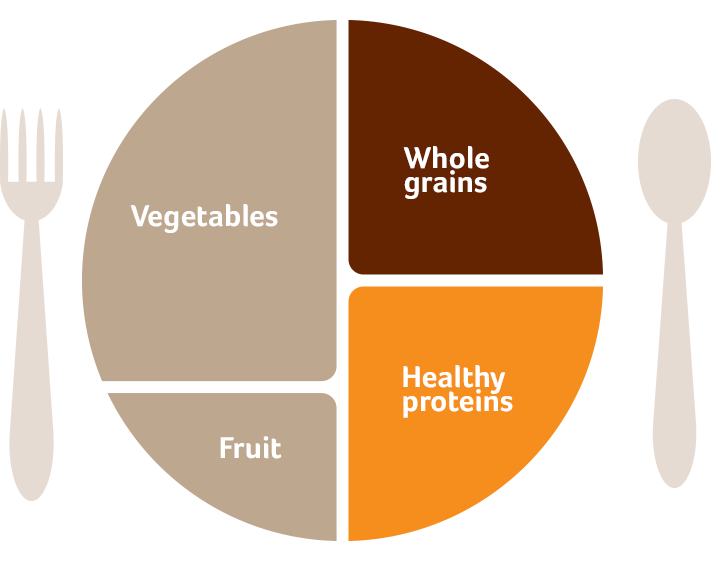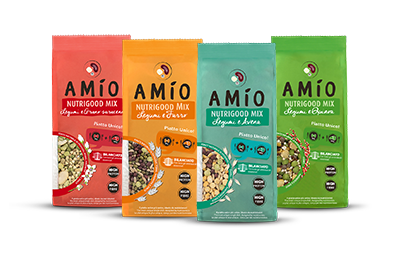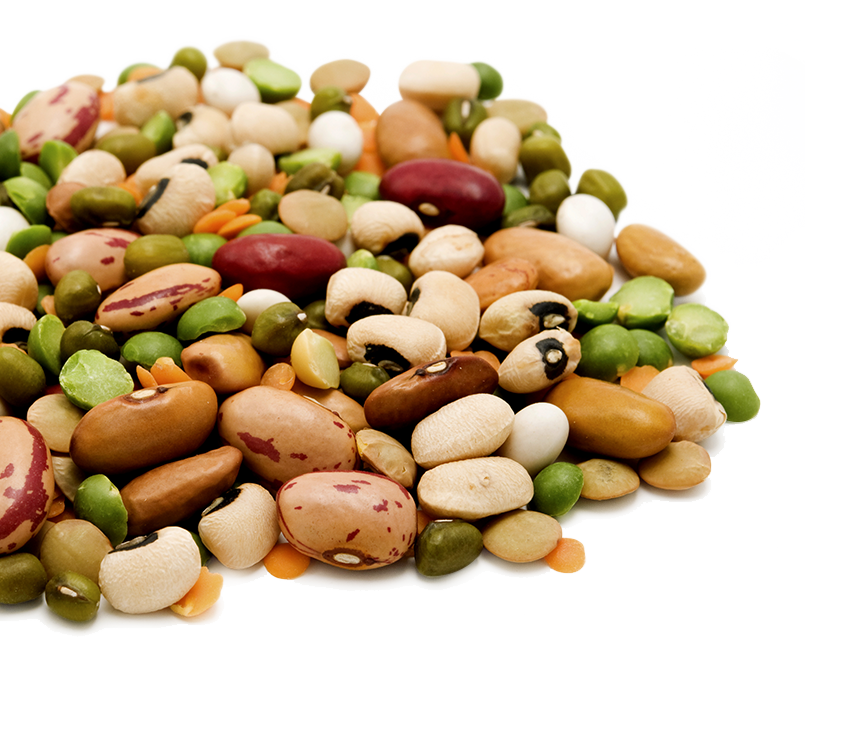
The balance between wellness and flavor
Developed with the contribution of SmartFood a research project that puts scientific knowledge at the service of healthy eating, the Nutrigood Mix recipes offer a simple way to rediscover the pleasure of eating what makes us feel good.
A balanced mix of pulses and cereals, carbohydrates and proteins, forming the ideal foundation for the Healthy Plate.
PdA©/IRI research, 01/2019, conducted on 12,000 Italian consumers, based on a selection of products sold in Italy.
prodottodellanno.it – Category: Pulses and Cereals.
PULSES AND OAT
PULSES AND SPELT
PULSES AND BUCKWHEAT
PULSES AND QUINOA
A complete and healthy meal with all the essential amino acids.
“The Healthy Plate: Rules for an Ideal Meal”
A meal can be considered balanced when it contains carbohydrates, proteins, and fats in the right proportions. By studying these proper ratios, Harvard Medical School in Boston developed a visual representation known as the “Healthy Eating Plate”: a mix of vegetables, whole grains, fruit, and healthy proteins, such as those found in legumes. This guideline should be applied to every meal of the day and combined with a healthy lifestyle.

Copyright © 2011 Harvard University


NUTRIGOOD MIX
With its balanced mix of legumes and grains, each serving of Nutrigood Mix meets your daily needs for healthy carbohydrates and proteins.

From Research, The Principles of Healthy Eating
Our mixes are part of a research project developed within the European Institute of Oncology in Milan, with the goal of promoting healthy and informed food choices.
Doctors, researchers, and nutritionists involved in the project work every day to study the properties of food and identify ingredients rich in valuable molecules that support overall well-being.
Thanks to their contribution, Nutrigood Mix recipes bring a generous share of essential nutrients into your daily diet.
How Our Mixes Are Created
selection
Grains and pulses are selected based on their nutritional profile.
composition
The ingredients are combined to create the right balance of carbohydrates and proteins.
preparation
We explore different recipes until we find the perfect mix, where all the ingredients cook evenly.”
pulses and nutrition:
What Science Says
Do legumes lead to bloating or digestive discomfort?
The feeling of bloating often associated with legumes is caused by bacterial fermentation — the process through which the gut microbiota helps the body digest fiber.
Interestingly, the very compounds that may cause some initial discomfort are also the ones responsible for many of the health benefits legumes offer.
Introducing legumes gradually into your diet, starting with small amounts and choosing those with softer skins, like peas, can help reduce unwanted effects.
Do pulses help you lose weight?
The World Health Organization has suggested that consuming legumes may help reduce the risk of obesity.
Studies on the topic have shown that a diet rich in legumes can be more effective for weight loss than a control diet with the same calorie intake.
Several mechanisms may help explain this effect, including: the high satiety power of legumes, due to their high fiber and protein content; the role of fiber in slowing the absorption of nutrients in the intestine; and the regulation of blood sugar and insulin levels, thanks to their low glycemic index.
Do pulses Help Protect Against Cardiovascular Disease?
A diet rich in fiber, antioxidant compounds (such as certain vitamins and polyphenols), and monounsaturated and polyunsaturated fats, including omega-3 can help reduce the risk of cardiovascular disease. From a nutritional perspective, legumes are a source of several of these nutrients and bioactive compounds, as well as an excellent source of plant-based protein. Moreover, increasing pulses consumption may lead to a reduction in the intake of animal-based protein sources, which are often high in saturated fats.
Can you get enough iron from plant-based foods?
Iron in food can be classified as “heme iron,” which is more efficiently absorbed by the body, and “non-heme iron,” which is absorbed less easily.
All the iron found in plant-based foods is non-heme.
For this reason, it’s a good idea to pair legumes with elements that enhance iron absorption such as vitamin C, which is abundant in citrus fruits.
Cooking can also improve the bioavailability of non-heme iron, so it’s always best to cook legumes thoroughly to make their iron content easier for the body to absorb.
